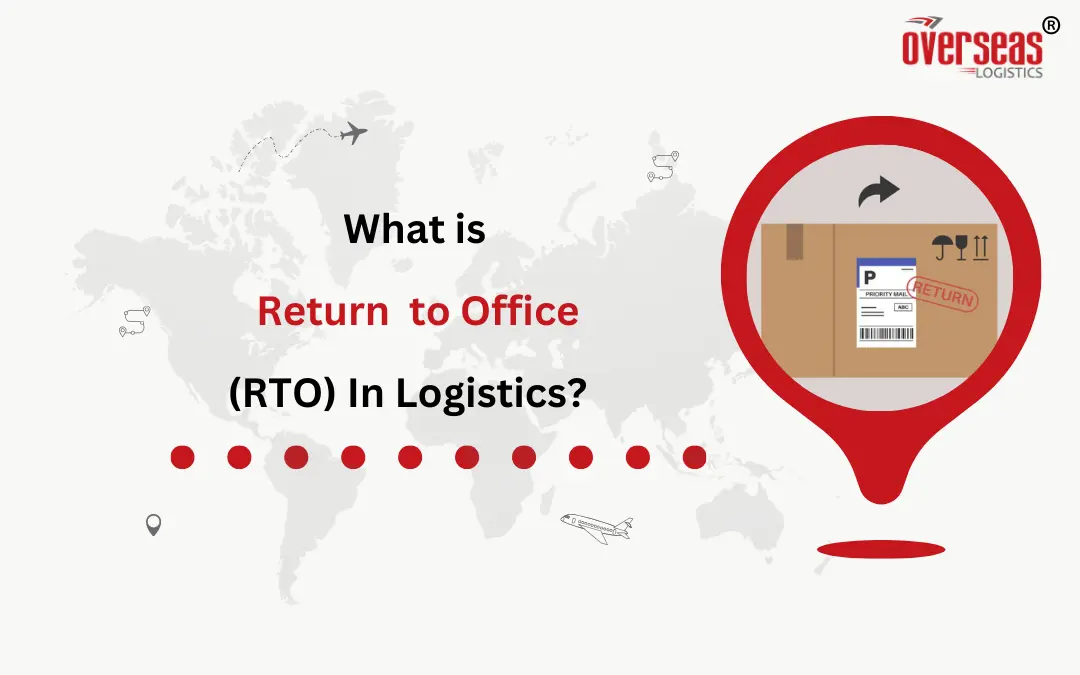In the realm of logistics, Return to Origin (RTO) refers to the process wherein a shipment is returned to its original location due to various reasons such as delivery failure, incorrect address, or customer refusal. This article delves into the intricacies of RTO in logistics and provides actionable insights on how to mitigate its occurrences. By understanding the root causes and implementing strategic solutions, businesses can streamline their operations, enhance customer satisfaction, and minimize unnecessary costs.
Understanding Return to Origin (RTO) in Logistics
Return to Origin (RTO) in logistics occurs when a package or shipment is unable to reach its intended destination and is consequently sent back to the point of origin. This can happen due to a multitude of reasons, including incorrect addresses, delivery failures, damaged goods, or customer refusals. RTO not only leads to operational inefficiencies but also incurs additional costs for businesses involved in the logistics chain.
Causes of Return to Origin (RTO)
1. Incorrect Address
One of the primary reasons for RTO is an incorrect or incomplete address provided by the sender or recipient.
2. Delivery Failures
Failed delivery attempts, which may result from the recipient not being available or refusing to accept the package, contribute significantly to RTO.
3. Damaged Goods
Shipments that are damaged in transit may be deemed undeliverable and consequently returned to the sender.
4. Customer Refusals
In some cases, customers may refuse to accept deliveries due to various reasons, leading to RTO.
Impact of Return to Origin (RTO) on Logistics
The ramifications of RTO extend beyond operational challenges to encompass financial implications and customer satisfaction concerns. RTO leads to increased transportation costs, additional processing time, and inventory management complexities. Moreover, it can adversely affect customer experience, resulting in dissatisfaction and potential loss of loyalty.
Strategies to Reduce Return to Origin (RTO) in Logistics
Reducing RTO requires a comprehensive approach that addresses underlying issues at various stages of the logistics process. By implementing proactive measures and leveraging technology, businesses can minimize RTO occurrences and optimise their operations.
1. Address Verification and Validation
Ensuring the accuracy and completeness of addresses at the point of entry is crucial in preventing RTO due to address errors. Implement address verification tools and validation mechanisms to rectify address discrepancies before dispatching shipments.
2. Enhanced Communication Channels
Establish effective communication channels with customers to provide timely updates on shipment status and delivery schedules. Proactive communication can help mitigate delivery failures resulting from recipient unavailability.
3. Quality Packaging
Invest in quality packaging materials to minimize the risk of damage during transit. Proper packaging not only protects the contents of the shipment but also reduces the likelihood of returns due to damage.
4. Streamlined Reverse Logistics Processes
Develop streamlined reverse logistics processes to handle returned shipments efficiently. Implementing automated return authorization and processing systems can expedite the handling of RTO shipments and minimize processing delays.
5. Data Analytics and Predictive Modeling
Utilise data analytics and predictive modeling techniques to identify patterns and trends associated with RTO. By analyzing historical data and customer behavior, businesses can anticipate potential RTO scenarios and proactively intervene to prevent them.
6. Collaborative Partnerships
Forge collaborative partnerships with logistics service providers and carriers to optimize delivery routes, minimize transit times, and enhance delivery accuracy. Collaborative efforts can help mitigate RTO risks and improve overall logistics performance.
Conclusion
Return to Origin (RTO) poses significant challenges for businesses operating in the logistics sector, impacting operational efficiency and customer satisfaction. By understanding the causes of RTO and implementing strategic measures to mitigate its occurrences, businesses can optimise their logistics processes, reduce costs, and enhance overall performance. Address verification, enhanced communication, quality packaging, streamlined reverse logistics, data analytics, and collaborative partnerships are key strategies in minimizing RTO and optimizing logistics operations.
FAQs
What are the common reasons for Return to Origin (RTO) in logistics?
Common reasons for RTO include incorrect addresses, delivery failures, damaged goods, and customer refusals.
How does Return to Origin (RTO) impact businesses?
RTO leads to increased costs, operational inefficiencies, and potential customer dissatisfaction, impacting overall business performance.
What measures can businesses take to reduce Return to Origin (RTO) occurrences?
Businesses can implement address verification, enhance communication channels, invest in quality packaging, streamline reverse logistics processes, leverage data analytics, and foster collaborative partnerships to reduce RTO.
Why is proactive communication essential in reducing Return to Origin (RTO)?
Proactive communication helps address delivery failures resulting from recipient unavailability, enabling businesses to reschedule deliveries and minimize RTO occurrences.
How can predictive modeling aid in mitigating Return to Origin (RTO) risks?
Predictive modeling enables businesses to identify patterns and trends associated with RTO, allowing them to anticipate potential issues and implement preventive measures proactively.
What role do collaborative partnerships play in reducing Return to Origin (RTO)?
Collaborative partnerships with logistics service providers and carriers facilitate the optimization of delivery processes, minimizing transit times and improving delivery accuracy, thereby reducing RTO risks.

